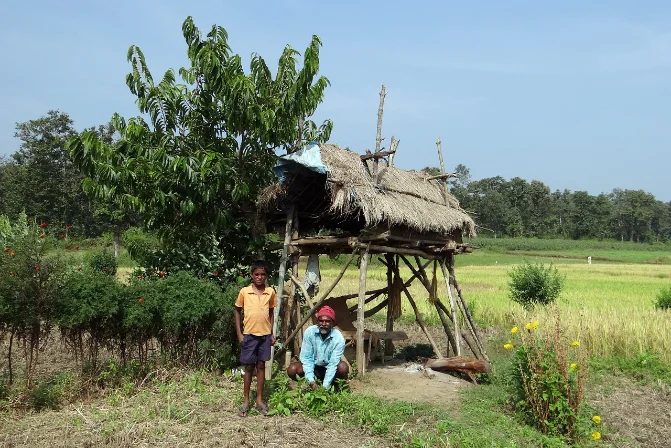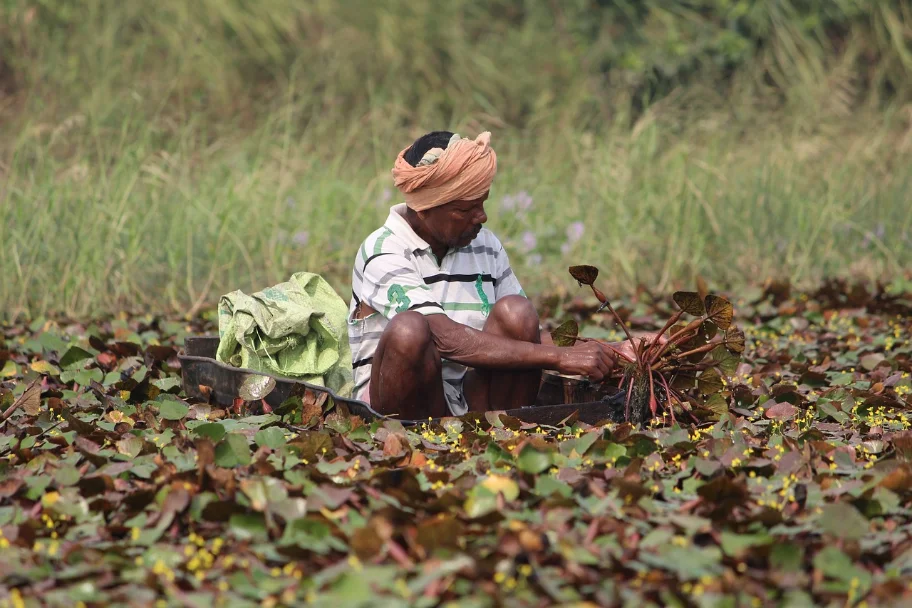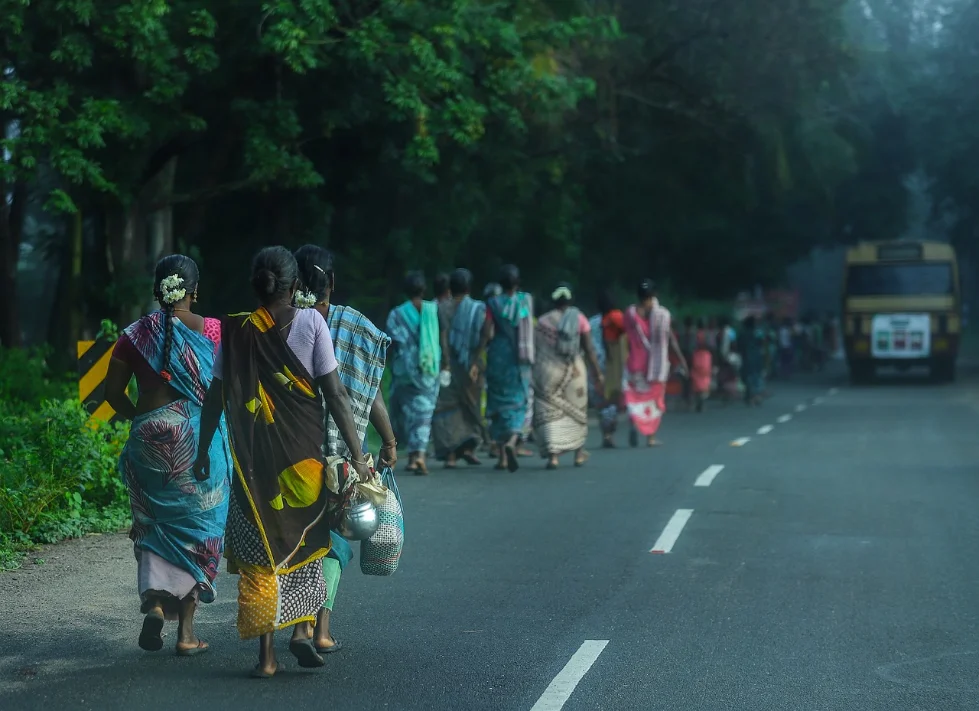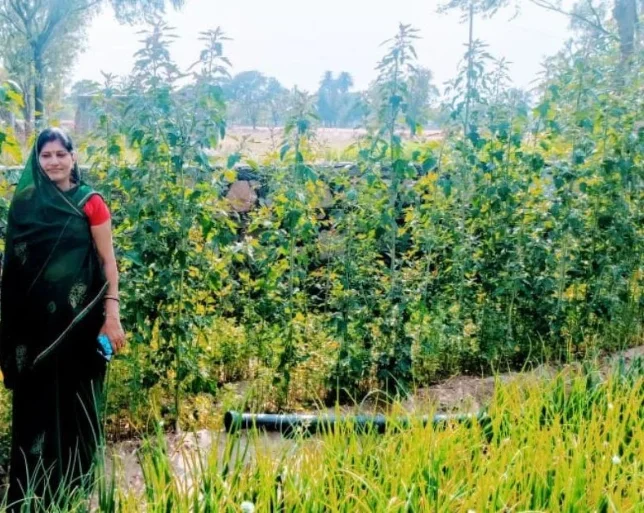Pappu Kumar recently reaped the fruits of his labor, successfully cultivating turmeric on the farm he had left behind years ago to pursue work in the Indian capital. With hopes of transforming his Hardial village farm in North India into a profitable enterprise, Kumar expressed optimism about the potential of this widely used spice in Indian cuisine.
Reflecting on past experiences with traditional crops like corn and wheat, Kumar explained, “Those crops would often succumb to diseases, and there were issues with stray or wild animals, like deer, invading the fields and devouring the crops. Turmeric doesn’t pose those challenges.”
Frustrated by the difficulties of farming, coupled with the meager income it generated, Kumar was part of a significant migration trend from rural areas to urban centers. As a result, vast stretches of farmland in Himachal Pradesh state were left untended over the years.
During the COVID-19 pandemic, as jobs disappeared in cities, a reverse migration to villages occurred, bringing back people like Kumar who returned to their roots.

Also Read: A Woman Converts 90 Acres Wasteland into a Thriving Green Forest in Odisha
In their quest to start anew in the rural setting, many returnees are now considering alternative farming methods.
Kumar drew inspiration from someone who successfully revitalized his own farms through turmeric cultivation. Reflecting on this, former army colonel P.C. Rana, who returned to his village upon retirement, shared, “I chose to grow turmeric because it’s a resilient crop that remains unaffected by diseases and possesses natural antibiotic properties.”
Turmeric cultivation proves to be a more efficient and eco-friendly choice, requiring less labor and water. Notably, the crops are spared from animal attacks, a significant concern for farmers in India, particularly from monkeys that wreak havoc on fields seeking food due to diminishing forests.
Having observed turmeric cultivation practices in various Indian states, Rana opted for a variety rich in curcumin, the compound responsible for both the spice’s vibrant yellow hue and its health benefits. Now recognized as the “turmeric man of Himachal Pradesh,” Rana practices organic farming methods, safeguarding the soil and boosting profits.
Sharing his approach, he emphasized, “I adhere to the principles of natural farming — no tractors for plowing, no use of chemicals or pesticides, and recycling of weeds and crop stubble to enrich the soil.”
Rana’s achievements have inspired numerous farmers to take up turmeric cultivation. Additionally, others are turning to herbs like aloe vera and lemongrass, which not only have a growing demand but also remain untouched by animals.

In the mountainous state with its network of coldwater streams, alternative agricultural practices are gaining popularity. Residents living near streams have constructed ponds for trout farming, capitalizing on the surging demand for this fish in affluent cities and among the thousands of tourists visiting the state.
Also Read: Couple Abandons City Life to Cultivate Dreams on a Remote Organic Farm
Reflecting on his journey since establishing the trout farm three years ago, Arjun Kumar, a former building contractor, has successfully developed a business selling trout and even established a hatchery for producing fertilized fish eggs.
Kumar shares his success story, saying, “In the past two years, I’ve earned $6,000 annually from selling fish seed and about $70 daily from selling trout.”
The aim is for such innovative farming initiatives to invigorate rural economies and generate fresh livelihood opportunities. Despite nearly half of India’s population relying on agriculture, income from farming has remained stagnant over the years.
Traditionally, India has focused on wheat and rice cultivation, a strategy endorsed by the government in the 1960s and 1970s to address severe food grain shortages. However, with the country now producing surplus rice and wheat, experts suggest that farmers, grappling with diminishing incomes, should explore alternative options.
Shifting to cultivate different crops or exploring diverse farming ventures is a positive move, according to agriculture expert Devendra Sharma. He advises farmers, saying, “I always recommend diversifying at least a portion of their land away from staples like wheat. This is a trend even local governments are now promoting.”
The expectation is that these new farming ventures will not only contribute to the struggling job market in a country with 1.4 billion people but also create employment opportunities. With two-thirds of the population under 35, youth unemployment remains a significant challenge.
Madhu Sharma, head of the fisheries department at the CSK Agricultural University in Palampur, sees trout fish farming as a promising avenue for unemployed youth, stating, “After the COVID-19 pandemic, many have returned home and are actively seeking such opportunities.”
Challenges lie ahead, notably global warming causing shifts in weather patterns.
Highlighting this concern, Sharma explains, “Water temperature is changing, affecting fish breeding. A rise of one or two degrees in May and June puts stress on the fish.”
Despite these hurdles, many are determined to overcome them in their quest to establish a life in the countryside. They believe it offers a better quality of life compared to the bustling towns and mega cities where they spent decades working.
Pappu Kumar has taken a small step by growing turmeric, but he has big plans for expansion this year.
Expressing his aspirations, he says, “Instead of seeking employment elsewhere, I aim to transform my farm into a successful business. Although I have much to learn about turmeric cultivation, I’m committed to planting it on more land.” With optimism, the farmer gets ready to sell his harvested crop in the local market.









